
Top Succulents for Thriving in Texas Climate: A Comprehensive Guide

When it comes to gardening in Texas, the hot and arid climate can pose a challenge for many plants. However, there is one type of plant that seems to thrive in these conditions: succulents. Succulents are known for their ability to store water in their thick leaves and stems, making them well-suited for drought-prone regions like Texas. With their unique shapes, vibrant colors, and low-maintenance requirements, succulents have become increasingly popular among gardeners and homeowners looking to add a touch of desert beauty to their landscapes.
In this comprehensive guide, we will explore the top succulents that are best suited for thriving in the Texas climate. We will discuss their specific needs and preferences, as well as provide tips and tricks for successful cultivation. Whether you are a seasoned gardener or a beginner looking to start your succulent collection, this article will serve as your go-to resource for selecting and caring for the perfect succulents in Texas. From the iconic Saguaro cactus to the delicate Echeveria, we will cover a wide range of succulent varieties that will not only survive but thrive in the harsh Texas weather.
- Agave plants are well-suited for the Texas climate
- Aloe vera is a hardy succulent that thrives in Texas
- The prickly pear cactus is a resilient succulent that can withstand the Texas heat
- Sedum plants are drought-tolerant and can thrive in the Texas climate
- Echeveria succulents are popular in Texas due to their ability to withstand heat and drought
- Sempervivum, also known as hens and chicks, are resilient succulents that can thrive in Texas
- The yucca plant is a versatile and hardy succulent that can adapt to the Texas climate
- Kalanchoe succulents are well-suited for the Texas climate and can tolerate both heat and cold
- Opuntia cacti, also known as paddle cacti, are native to Texas and can thrive in its climate
- Graptopetalum succulents are low-maintenance and can survive in the Texas heat
- Agave plants are well-suited for the Texas climate because they are resilient
- Aloe vera is a hardy succulent that thrives in Texas due to its ability to withstand heat and drought
- The prickly pear cactus is a resilient succulent that can withstand the Texas heat without issue
- Sedum plants are drought-tolerant and can thrive in the Texas climate, making them a great choice for succulent enthusiasts
- Echeveria succulents are popular in Texas because they can tolerate the heat and drought that is common in the state
- Sempervivum, also known as hens and chicks, are resilient succulents that can thrive in Texas due to their ability to withstand harsh conditions
- The yucca plant is a versatile and hardy succulent that can adapt to the Texas climate, making it a good choice for gardeners in the state
- Kalanchoe succulents are well-suited for the Texas climate because they can tolerate both heat and cold, making them a versatile option
- Opuntia cacti, also known as paddle cacti, are native to Texas and can thrive in its climate, making them an ideal choice for gardeners in the state
- Graptopetalum succulents are low-maintenance and can survive in the Texas heat with minimal care, making them an excellent choice for busy gardeners
- Frequently Asked Questions
Agave plants are well-suited for the Texas climate
Agave plants are a popular choice for garden enthusiasts in Texas due to their ability to thrive in the hot and dry climate. These succulents are known for their striking architectural form, making them a visually appealing addition to any garden or landscape.
One of the main reasons agave plants are well-suited for the Texas climate is their ability to withstand high temperatures. The hot and arid conditions in Texas can be challenging for many plants, but agaves have adapted to these conditions over time. Their thick, fleshy leaves help them retain water, allowing them to survive in drought-like conditions.
Furthermore, agaves are highly resilient and can tolerate a wide range of soil conditions. Whether your soil is sandy, rocky, or clay-based, agave plants can adapt and thrive. This makes them a versatile choice for Texas gardeners who may have varying soil types in their yards.
In addition to their adaptability, agave plants are also low-maintenance, which is ideal for busy gardeners or those new to gardening. Once established, these succulents require minimal watering and can go long periods without irrigation. This makes them an excellent choice for homeowners looking to conserve water in the Texan climate, where water restrictions may be in place during times of drought.
 Discover the Most Popular Succulents: Names and Care Tips
Discover the Most Popular Succulents: Names and Care TipsAgave plants come in a variety of species and sizes, allowing you to choose the perfect one for your landscape. Some popular agave species for Texas gardens include Agave americana, Agave parryi, and Agave victoriae-reginae. These species offer different leaf colors, sizes, and growth habits, providing options for every gardener's preference.
If you're looking for succulents that can thrive in the Texas climate, agave plants are an excellent choice. Their ability to withstand high temperatures, adapt to various soil conditions, and low-maintenance requirements make them a perfect addition to any garden or landscape in the Lone Star State.
Aloe vera is a hardy succulent that thrives in Texas
When it comes to selecting succulents that can withstand the hot and arid climate of Texas, Aloe vera is a top contender. This versatile plant not only adds beauty to your garden but also has numerous medicinal properties.
Aloe vera is renowned for its ability to tolerate high temperatures and drought conditions, making it an ideal choice for Texas gardens. Its thick, fleshy leaves store water, allowing it to survive in dry conditions. This succulent is also known for its low maintenance requirements, making it a favorite among both novice and experienced gardeners.
One of the key benefits of growing Aloe vera in your Texas garden is its medicinal value. The gel found within its leaves is rich in vitamins, minerals, and antioxidants that offer a range of health benefits. From soothing sunburns to promoting digestion, Aloe vera has been used for centuries for its healing properties.
Whether you choose to grow Aloe vera in containers or directly in the ground, it requires well-draining soil and plenty of sunlight. In Texas, it's crucial to protect the plant from frost during the winter months. Planting it in pots that can be brought indoors during extreme cold spells is a wise choice.
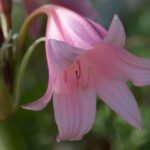 Discover the Stunning Succulents with Bell-Shaped Flowers
Discover the Stunning Succulents with Bell-Shaped FlowersTo care for your Aloe vera, water it sparingly and allow the soil to dry out between watering sessions. Overwatering can lead to root rot, so it's essential to strike the right balance. Additionally, Aloe vera doesn't require frequent fertilization and can thrive with minimal nutrients.
Overall, Aloe vera is a resilient and adaptable succulent that can withstand the challenging climate of Texas. Its striking appearance, low maintenance needs, and medicinal properties make it a must-have addition to any Texan garden.
The prickly pear cactus is a resilient succulent that can withstand the Texas heat
The prickly pear cactus is a popular and resilient succulent that thrives in the Texas climate. Known for its distinctive paddle-shaped pads and vibrant flowers, this succulent is a favorite among gardeners in the region.
One of the main reasons why the prickly pear cactus is well-suited for the Texas heat is its ability to store water in its fleshy pads. This adaptation allows it to survive in arid conditions and tolerate long periods of drought. The cactus also has a unique mechanism called crassulacean acid metabolism (CAM), which helps it conserve water by opening its stomata at night to reduce evaporation.
In addition to its water-saving abilities, the prickly pear cactus is also highly tolerant of high temperatures and intense sunlight. Its thick, waxy skin helps protect it from the scorching Texas sun, preventing excessive water loss. This makes it an excellent choice for gardeners looking to add low-maintenance succulents to their outdoor spaces.
Another advantage of the prickly pear cactus is its ability to adapt to various soil types. Whether you have sandy soil, clay soil, or rocky soil, this succulent can adapt and thrive. It does best in well-draining soil, but can also tolerate occasional periods of moisture.
When it comes to care, the prickly pear cactus is relatively low-maintenance. It requires minimal watering, especially during the dormant winter months. However, during its active growing season in spring and summer, it may benefit from occasional deep watering.
 Discover the Diverse Varieties of Succulent Plants Available
Discover the Diverse Varieties of Succulent Plants AvailableWhen planting the prickly pear cactus, it's important to wear thick gloves and use tongs or newspaper to handle the pads. This is because the cactus is covered in tiny spines, which can cause skin irritation. It's also advisable to choose a location with ample sunlight for optimal growth.
The prickly pear cactus is a resilient succulent that can withstand the harsh Texas climate. Its water-storing capabilities, heat tolerance, and adaptability to various soil types make it an ideal choice for gardeners in the region. With minimal care and attention, this succulent can thrive and add a unique touch to any outdoor space.
Sedum plants are drought-tolerant and can thrive in the Texas climate
If you're looking for succulents that can withstand the hot and dry conditions of Texas, Sedum plants are an excellent choice. These hardy plants have adapted to arid environments and have developed unique adaptations to store water, making them highly drought-tolerant.
With their fleshy leaves and stems, Sedum plants can store water for extended periods, allowing them to survive in Texas' scorching summers. Their ability to retain moisture also makes them a low-maintenance option for busy gardeners or those with limited time for watering.
Here are some popular Sedum varieties that thrive in the Texas climate:
1. Sedum spurium (Dragon's Blood)
This low-growing Sedum variety forms a dense mat of succulent foliage and produces clusters of vibrant red flowers in the summer. Dragon's Blood is known for its resilience, thriving in full sun and well-draining soil. It can withstand both extreme heat and cold temperatures, making it an ideal choice for Texas gardeners.
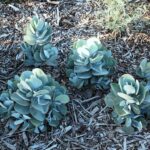 Discover Native African Succulents: Diverse & Hardy Garden Species!
Discover Native African Succulents: Diverse & Hardy Garden Species!2. Sedum reflexum (Blue Spruce Stonecrop)
Blue Spruce Stonecrop is a compact Sedum variety that features bluish-green foliage resembling the needles of a blue spruce tree. Its needle-like leaves are succulent and have a unique powdery coating that helps reduce water loss. This Sedum variety is drought-tolerant and suitable for rock gardens, containers, or as ground cover in Texas landscapes.
3. Sedum autumn joy (Stonecrop)
Stonecrop is a popular Sedum cultivar known for its stunning pink blooms that emerge in late summer and transition to a coppery color in the fall. This variety is particularly attractive to butterflies and pollinators. Stonecrop is resilient and can tolerate a wide range of soil conditions, including dry and sandy soils, making it an excellent choice for Texas gardens.
- Tips for Growing Sedum in Texas:
- Plant Sedum in well-draining soil to prevent waterlogging.
- Choose a sunny location for your Sedum plants, as they thrive in full sun.
- Water your Sedum sparingly, allowing the soil to dry out between watering sessions.
- Fertilize your Sedum plants once a year with a balanced succulent fertilizer.
- Prune back any dead or damaged foliage in early spring to encourage new growth.
By selecting the right Sedum varieties and providing them with the proper care, you can enjoy a stunning succulent garden that thrives in the Texas climate. Whether you're a seasoned gardener or a beginner, Sedum plants are an excellent choice for adding beauty and resilience to your outdoor space.
Echeveria succulents are popular in Texas due to their ability to withstand heat and drought
Echeveria succulents are a popular choice for gardeners in Texas, thanks to their remarkable ability to thrive in the state's challenging climate. These succulents are known for their unique rosette-shaped foliage, which comes in a wide range of colors and textures. Whether you are a beginner or an experienced gardener, Echeveria succulents are a great addition to any Texas garden.
One of the main reasons why Echeveria succulents are so well-suited to Texas is their ability to withstand both extreme heat and drought. Texas summers can be scorching, with temperatures often soaring above 100 degrees Fahrenheit. These succulents have adapted to these conditions by developing thick, fleshy leaves that store water for extended periods. This allows them to survive prolonged periods of drought without withering away.
Additionally, Echeveria succulents are exceptionally heat-tolerant. Their ability to thrive in the intense Texas sun makes them a perfect choice for gardeners who want to add some color and interest to their landscape without worrying about constant maintenance and watering.
Top Echeveria Varieties for Texas Gardens
When choosing Echeveria succulents for your Texas garden, it's important to select varieties that are well-suited to the climate and can handle the intense heat and occasional cold snaps that Texas experiences. Here are some top Echeveria varieties that are known to thrive in Texas:
 Low-Maintenance Succulents: Finding the Least Demanding Varieties
Low-Maintenance Succulents: Finding the Least Demanding Varieties- Echeveria 'Black Prince': This variety features dark, almost black rosettes that contrast beautifully with its powdery blue leaves. It is incredibly resilient and can handle both the intense Texas heat and cold snaps.
- Echeveria 'Lola': 'Lola' is known for its stunning pink and lavender hues. It is a hardy succulent that can tolerate the Texas heat and requires minimal care.
- Echeveria 'Perle von Nürnberg': With its powdery lavender and pink coloration, 'Perle von Nürnberg' is a popular choice for Texas gardens. It is drought-tolerant and can handle the heat while adding a touch of elegance to any landscape.
- Echeveria 'Doris Taylor': This variety features fuzzy, silvery leaves that form tight rosettes. It can handle the Texas heat and is a great choice for rock gardens or as a focal point in your garden.
These are just a few examples of the many Echeveria varieties that are suitable for Texas gardens. Remember to provide them with well-draining soil, ample sunlight, and minimal watering to ensure their success in the Lone Star State.
By adding Echeveria succulents to your Texas garden, you can enjoy a touch of color, texture, and low-maintenance beauty even in the harshest of climates. These resilient succulents are sure to thrive and bring joy to your outdoor space.
Sempervivum, also known as hens and chicks, are resilient succulents that can thrive in Texas
Why Sempervivum is a Top Choice for Texas Gardens
Sempervivum, commonly referred to as hens and chicks, are among the top succulents that can thrive in the challenging climate of Texas. These resilient plants are well-known for their ability to withstand hot and dry conditions, making them an ideal choice for gardeners who want low-maintenance yet visually appealing plants.
The Resilience of Sempervivum
One of the main reasons why Sempervivum is a top choice for Texas gardens is its remarkable resilience. These succulents have adapted to survive in harsh environments, making them perfect for the challenging climate of the Lone Star State.
With their thick, fleshy leaves and compact rosette growth habit, Sempervivum can store water efficiently, allowing them to endure prolonged periods of drought. This means that even during Texas' scorching summers, these plants can maintain their vibrant appearance without requiring excessive watering.
Thriving in Texas Heat
Another advantage of Sempervivum is their ability to thrive in the intense heat that characterizes the Texas climate. These succulents have evolved to cope with high temperatures, ensuring their survival even during the hottest months of the year.
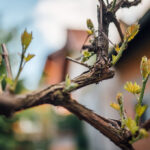 Discover Diverse Succulents with Branching Growth Patterns
Discover Diverse Succulents with Branching Growth PatternsBy positioning their leaves in a rosette formation, Sempervivum minimizes water loss through transpiration, reducing the risk of dehydration. Their ability to adapt to extreme temperatures makes them an excellent choice for Texas gardeners who want plants that can withstand the sweltering heat.
Low Maintenance and Versatile
Sempervivum is renowned for its low maintenance requirements, making it an attractive option for busy gardeners or those with limited gardening experience. These succulents can thrive with minimal care, making them an excellent choice for Texas gardeners who may not have the time or resources for high-maintenance plants.
Furthermore, Sempervivum is a versatile succulent that can be grown in various settings. Whether you prefer container gardening, rock gardens, or ground cover, hens and chicks can adapt to different environments and add a touch of elegance to your Texas garden.
A Wide Range of Varieties
Sempervivum offers a wide range of varieties, each with its unique charm and characteristics. From the classic green rosettes to striking red or purple hues, you can find a Sempervivum variety that suits your personal preference and complements your garden's aesthetic.
Some popular Sempervivum varieties for Texas gardens include 'Cobweb', 'Black Beauty', 'Red Beauty', and 'Green Wheel' among many others. With so many options available, you can create a diverse and visually stunning succulent collection in your Texas garden.
Final Thoughts
If you're looking for succulents that can thrive in the Texas climate, Sempervivum is undoubtedly one of the top choices. With their resilience, ability to withstand heat, low maintenance requirements, and wide range of varieties, these hens and chicks can add beauty and charm to your Texas garden while enduring the challenging weather conditions.
Consider adding Sempervivum to your succulent collection and enjoy their enduring beauty throughout the seasons in the Lone Star State.
 Discover the Stunning Succulent Plants with Rainbow-Colored Leaves
Discover the Stunning Succulent Plants with Rainbow-Colored LeavesThe yucca plant is a versatile and hardy succulent that can adapt to the Texas climate
The yucca plant is a versatile and hardy succulent that can adapt to the Texas climate. With its unique architectural shape and low maintenance requirements, it is no wonder that yuccas are a popular choice for succulent enthusiasts in Texas.
Here are some of the top yucca varieties that thrive in the Texas climate:
1. Yucca filamentosa (Adam's needle)
This yucca variety is well-known for its spiky leaves and large white flowers. It can tolerate extreme heat and drought conditions, making it an excellent choice for Texas gardens. The Adam's needle yucca is also deer resistant, adding an extra advantage for those who have to deal with wildlife in their area.
2. Yucca gloriosa (Spanish dagger)
The Spanish dagger yucca is a showstopper with its tall, sword-like leaves and stunning flower spikes. It is incredibly drought tolerant and can withstand the intense summer heat in Texas. The flowers of the Spanish dagger yucca attract pollinators, making it a beneficial addition to any garden.
3. Yucca pallida (Pale-leaf yucca)
The pale-leaf yucca is a compact and low-growing variety that is perfect for smaller gardens or containers. It features silvery-blue leaves and produces creamy white flowers in the spring. This yucca is well-suited for the Texas climate and can handle both heat and cold temperatures.
4. Yucca rostrata (Beaked yucca)
The beaked yucca is a striking succulent with its blue-green leaves and tall flower stalks. It is highly adaptable and can thrive in various soil types, including the alkaline soils commonly found in Texas. This yucca is also resistant to pests and diseases, making it a low-maintenance option for Texas gardeners.
5. Yucca recurvifolia (Curve-leaf yucca)
The curve-leaf yucca is a versatile and drought-tolerant succulent that can withstand the Texas climate with ease. It has curved and spiny leaves that add a unique texture to any landscape. This yucca produces creamy white flowers on tall stalks, attracting bees and butterflies to your garden.
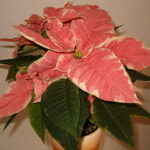 Exploring the Diversity: Succulents in Mixed Genus Categories
Exploring the Diversity: Succulents in Mixed Genus CategoriesWhen selecting yuccas for your Texas garden, it is important to consider their specific sunlight and water requirements. Most yuccas prefer full sun and well-draining soil. Once established, these succulents are relatively low maintenance, requiring minimal watering and attention.
With their ability to withstand the harsh conditions of the Texas climate, yuccas are an ideal choice for any succulent lover looking to create a stunning and resilient garden.
Kalanchoe succulents are well-suited for the Texas climate and can tolerate both heat and cold
If you're looking for succulents that can thrive in the Texas climate, Kalanchoe succulents are a great choice. These plants are known for their ability to tolerate both extreme heat and cold temperatures, making them resilient in the sometimes unpredictable Texas weather.
One of the key reasons why Kalanchoe succulents are well-suited for Texas is their ability to adapt to various environments. They can withstand the scorching heat of the summer months and still maintain their vibrant colors and healthy foliage. Additionally, they are capable of surviving during the colder winter months, making them a reliable choice for Texas gardeners.
Another advantage of Kalanchoe succulents is their low maintenance requirements. They are incredibly hardy and can handle drought-like conditions, which is a common occurrence in Texas. This means that you won't have to constantly water them, saving you time and effort in your gardening routine.
Popular Kalanchoe succulents for Texas gardens:
- Kalanchoe Luciae: Also known as "Paddle Plant" or "Flapjack," this succulent has unique, paddle-shaped leaves that turn a stunning red color when exposed to direct sunlight. It can handle both hot and cold temperatures, making it a perfect addition to your Texas garden.
- Kalanchoe Blossfeldiana: This succulent is highly popular for its vibrant, long-lasting flowers that come in various colors, including red, orange, pink, and yellow. It thrives in the Texas climate and can add a pop of color to your garden all year round.
- Kalanchoe Fedtschenkoi: Commonly known as "Lavender Scallops," this succulent features unique, scalloped leaves with a lovely lavender hue. It is drought-tolerant and can handle the heat of the Texas summer, making it a resilient choice for your garden.
Overall, if you're looking for succulents that can thrive in the Texas climate, Kalanchoe succulents are an excellent choice. With their ability to tolerate both heat and cold, low maintenance requirements, and a variety of stunning species to choose from, they are sure to be a wonderful addition to your Texas garden.
 Exploring the Possibility: Can Succulents Really Have Black Flowers?
Exploring the Possibility: Can Succulents Really Have Black Flowers?Opuntia cacti, also known as paddle cacti, are native to Texas and can thrive in its climate
Opuntia cacti, also known as paddle cacti, are native to Texas and can thrive in its climate. These succulents are well-adapted to the hot and dry conditions commonly found throughout the state. Their unique paddle-shaped stems, covered in clusters of spines, make them a striking addition to any garden or landscape.
One of the key reasons why Opuntia cacti thrive in Texas is their ability to store water in their thick, fleshy stems. This adaptation allows them to withstand long periods of drought without suffering severe damage. Additionally, their spines help to reduce water loss by creating a barrier that limits evaporation.
Opuntia cacti are available in a variety of species, each with its own unique characteristics. Some popular species in Texas include Opuntia engelmannii, Opuntia lindheimeri, and Opuntia ellisiana. These varieties are known for their beautiful yellow flowers that bloom in the spring and early summer.
Benefits of Growing Opuntia Cacti in Texas
Growing Opuntia cacti in Texas offers several benefits:
- Drought Tolerance: Opuntia cacti are highly drought-tolerant, making them an ideal choice for regions with limited water resources or frequent drought conditions.
- Low Maintenance: These succulents require minimal care once established. They are highly adaptable and can thrive in a wide range of soil types, including sandy and rocky soils.
- Wildlife Attraction: The flowers of Opuntia cacti attract pollinators such as bees and butterflies, adding life and color to your garden.
- Edible Fruits: Some Opuntia species produce edible fruits known as prickly pears. These fruits are not only delicious but also rich in vitamins and antioxidants.
- Drought-Resistant Landscaping: Opuntia cacti can be used effectively in xeriscaping projects, which focus on creating drought-resistant and low-water landscapes. Their unique form and striking appearance can add visual interest to any design.
When growing Opuntia cacti in Texas, it is important to provide them with well-draining soil and ample sunlight. These plants require at least six hours of direct sunlight daily to thrive. Additionally, avoid overwatering as it can lead to root rot and other issues.
Overall, Opuntia cacti are an excellent choice for Texans looking to incorporate low-maintenance, drought-tolerant plants into their gardens. With their unique appearance and ability to thrive in the Texas climate, these succulents are sure to make a statement in any landscape.
 Unveiling the Leafy Secrets of Succulents: Exploring Their Diversity
Unveiling the Leafy Secrets of Succulents: Exploring Their DiversityGraptopetalum succulents are low-maintenance and can survive in the Texas heat
Graptopetalum succulents are a popular choice for gardeners in Texas due to their ability to thrive in the hot and dry climate. These low-maintenance plants are known for their fleshy leaves and stunning rosette shapes.
One of the main reasons why Graptopetalum succulents are so well-suited for the Texas climate is their drought tolerance. These plants have adapted to survive in arid conditions by storing water in their leaves, allowing them to withstand long periods without rainfall.
Furthermore, Graptopetalum succulents are also highly heat-tolerant. They can endure the scorching temperatures that are common in Texas during the summer months. This makes them the perfect choice for gardeners who want to add some greenery to their landscape without constantly worrying about watering.
Another advantage of Graptopetalum succulents is their ability to thrive in various types of soil. They are adaptable to different soil compositions, including sandy, rocky, or loamy soils. This versatility makes it easier for gardeners to grow these succulents in different areas of their garden.
One popular Graptopetalum succulent variety that is well-suited for the Texas climate is the Graptopetalum paraguayense, also known as Ghost Plant. This succulent has powdery blue-green leaves with a hint of pink, which adds a unique touch to any garden.
If you are looking for low-maintenance succulents that can withstand the Texas heat, Graptopetalum succulents are an excellent choice. Their drought tolerance, heat resistance, and adaptability to different soil types make them a reliable and beautiful addition to any garden in Texas.
Agave plants are well-suited for the Texas climate because they are resilient
Agave plants are a popular choice for Texas gardeners due to their ability to thrive in the state's challenging climate. These succulents are known for their resilience and ability to withstand hot, dry conditions, making them an excellent choice for gardens and landscapes in Texas.
One of the key reasons why agave plants are well-suited for the Texas climate is their ability to store water in their leaves. This adaptation allows them to survive during periods of drought, making them low-maintenance and water-efficient plants. Additionally, their thick, fleshy leaves help to reduce water loss through evaporation.
Another advantage of agave plants is their tolerance to extreme temperatures. Texas experiences both scorching summers and occasional freezing winters, and agaves can withstand these temperature fluctuations. Their ability to handle both extreme heat and cold makes them a reliable choice for gardeners in Texas.
Furthermore, agave plants are highly adaptable to different soil types, including the well-draining soil commonly found in Texas. They can thrive in rocky, sandy, or loamy soils, making them versatile for various garden settings.
Agave plants come in a wide range of shapes, sizes, and colors, offering gardeners plenty of options to choose from. Some popular varieties include Agave americana, Agave parryi, and Agave victoriae-reginae, each with its own unique characteristics and visual appeal.
In addition to their resilience and adaptability, agave plants also have an aesthetic value that enhances any garden or landscape. Their architectural rosettes and spiky leaves create a striking focal point or add texture to a garden bed.
Overall, agave plants are an excellent choice for Texas gardeners looking for low-maintenance, water-efficient, and visually appealing plants. Their ability to thrive in the harsh Texas climate makes them a reliable and beautiful addition to any garden or landscape.
Aloe vera is a hardy succulent that thrives in Texas due to its ability to withstand heat and drought
Aloe vera is a hardy succulent that thrives in Texas due to its ability to withstand heat and drought. This versatile plant is not only aesthetically pleasing but also offers numerous health benefits. Native to arid regions, aloe vera has adapted well to the hot and dry climate of Texas.
One of the main reasons why aloe vera is such a popular choice for Texans is its low maintenance requirements. This succulent can survive in a range of soil types, as long as it is well-draining. The sandy and loamy soils commonly found in Texas are ideal for aloe vera's root system.
Furthermore, aloe vera requires minimal water once established. In Texas, where water conservation is crucial, this drought-tolerant succulent is the perfect addition to any garden or landscape. It stores water in its leaves, allowing it to survive even during extended periods without rainfall.
Not only is aloe vera resilient, but it also offers a myriad of uses. The gel found inside its leaves is known for its healing properties. It can be applied topically to soothe sunburns, minor cuts, and skin irritations. Additionally, aloe vera gel is often used in cosmetic products due to its moisturizing and anti-inflammatory effects.
When it comes to planting aloe vera in Texas, it is essential to provide it with adequate sunlight. This succulent thrives in full sun, so make sure to place it in a spot that receives at least six hours of direct sunlight every day. However, be cautious of extreme temperatures during heatwaves, as aloe vera can suffer from sunburn if exposed to scorching rays.
Overall, aloe vera is a top choice for thriving in the Texas climate. Its ability to withstand heat, drought, and low maintenance requirements make it a perfect succulent for both beginner and experienced gardeners alike.
The prickly pear cactus is a resilient succulent that can withstand the Texas heat without issue
Prickly Pear Cactus
The prickly pear cactus, scientifically known as Opuntia, is a highly resilient succulent that thrives in the hot and arid climate of Texas. This succulent is characterized by its flat, paddle-like stems covered in spiky thorns. The prickly pear cactus is not only known for its ability to withstand the intense heat but also for its vibrant and beautiful flowers that bloom in various shades of yellow, orange, and red.
This succulent is an excellent choice for Texas gardeners looking to add some unique and drought-tolerant plants to their landscapes. It requires minimal maintenance and can survive in a variety of soil conditions, making it an ideal choice for both beginner and experienced gardeners.
When planting the prickly pear cactus, it's crucial to choose a location that receives full sun exposure, as this plant thrives in bright sunlight. Additionally, well-draining soil is essential to prevent root rot, as the prickly pear cactus is highly susceptible to excessive moisture.
One notable feature of the prickly pear cactus is its edible fruits, known as tunas or prickly pears. These fruits are not only delicious but also have numerous health benefits. They are rich in antioxidants, vitamins, and minerals, making them a valuable addition to any diet.
However, it's important to handle the prickly pear cactus with caution due to its spiky thorns. Wear thick gloves and use tongs or a towel when handling this succulent to avoid any injuries.
Key Features:
- Resilient and can withstand the intense Texas heat
- Vibrant and beautiful flowers in shades of yellow, orange, and red
- Drought-tolerant and requires minimal maintenance
- Edible fruits with numerous health benefits
Tip:
Consider planting the prickly pear cactus in rock gardens, containers, or xeriscapes to create a stunning desert-like landscape in your Texas garden.
Sedum plants are drought-tolerant and can thrive in the Texas climate, making them a great choice for succulent enthusiasts
Sedum plants are a popular choice among succulent enthusiasts in Texas due to their ability to thrive in the state's climate. These drought-tolerant plants have adapted to withstand the hot and dry conditions, making them a perfect addition to any garden or landscape.
One of the key advantages of Sedum plants is their ability to store water in their leaves, stems, and roots. This adaptation allows them to survive for extended periods without regular watering, making them an ideal choice for those looking to conserve water or have limited access to irrigation systems.
Additionally, Sedum plants come in a variety of shapes, colors, and sizes, making them a versatile option for different garden styles. Whether you prefer low-growing ground cover varieties or taller, more upright Sedums, there is a plant to suit every taste and preference.
Here are some popular Sedum varieties that thrive in the Texas climate:
1. Sedum reflexum (Blue Spruce Sedum)
- This Sedum variety is known for its striking blue-gray foliage that resembles the needles of a spruce tree.
- It forms a dense mat of succulent leaves, making it an excellent choice for ground cover or container gardening.
- Blue Spruce Sedum produces small, star-shaped yellow flowers in the summer, adding a pop of color to your garden.
2. Sedum spurium (Dragon's Blood Sedum)
- Dragon's Blood Sedum is a low-growing variety that forms a dense carpet of succulent foliage.
- The leaves are deep red in color, resembling droplets of blood, hence the name.
- This Sedum variety is known for its ability to tolerate full sun and poor soil conditions, making it a resilient choice for Texas gardens.
3. Sedum kamtschaticum (Russian Stonecrop)
- Russian Stonecrop is a hardy Sedum variety that produces bright yellow flowers in the summer.
- It has succulent, fleshy leaves that turn bronze-red in the fall, adding seasonal interest to your garden.
- This Sedum is known for its ability to spread and fill in gaps, making it ideal for rock gardens or as a ground cover.
Sedum plants are an excellent choice for succulent enthusiasts looking to create a thriving garden in the Texas climate. Their drought-tolerant nature, water storage capabilities, and variety of colors and sizes make them a versatile and resilient option. Consider adding these popular Sedum varieties to your collection and enjoy their beauty year-round.
Echeveria succulents are popular in Texas because they can tolerate the heat and drought that is common in the state
Echeveria succulents are a great choice for gardeners in Texas who are looking for plants that can thrive in the hot and arid climate. These succulents are known for their ability to withstand high temperatures and low water conditions, making them a perfect choice for the Texas climate.
One of the main reasons why Echeveria succulents are so popular in Texas is their ability to tolerate the intense heat that the state is known for. These plants have thick, fleshy leaves that help them retain water and survive in dry conditions. They are also able to handle direct sunlight without wilting or burning, which is crucial in Texas where the sun can be relentless.
Another advantage of Echeveria succulents is their low water requirements. These plants have adapted to survive in regions with limited rainfall, making them a great option for gardeners who want to conserve water. Echeveria succulents can store water in their leaves, allowing them to survive for longer periods without regular watering.
When it comes to choosing Echeveria succulents for your Texas garden, there are several popular varieties to consider. One of the most well-known varieties is Echeveria 'Doris Taylor', which features rosettes of pale blue-green leaves with pink edges. This variety is not only beautiful but also highly drought-tolerant.
Another popular choice is Echeveria 'Black Prince', which has dark, almost black leaves that form a striking contrast against the other plants in your garden. This variety is also highly adaptable and can handle a wide range of temperatures, making it a great option for Texas gardeners.
Echeveria 'Perle von Nurnberg' is another top choice for Texas gardeners. This variety has soft, pastel-colored leaves with a pinkish hue and a powdery coating. It is a fast-growing succulent that can tolerate both heat and cold, making it a versatile addition to any Texas garden.
Echeveria succulents are a popular choice for Texas gardeners due to their ability to withstand the heat and drought that is common in the state. These plants not only add beauty to your garden but also require minimal maintenance and water. Consider adding some of the popular varieties mentioned above to your Texas garden for a stunning display of resilient succulents.
Sempervivum, also known as hens and chicks, are resilient succulents that can thrive in Texas due to their ability to withstand harsh conditions
One of the top succulents that gardeners in Texas should consider is the Sempervivum, commonly known as hens and chicks. These hardy plants are known for their ability to withstand the extreme weather conditions that are common in the Texas climate.
What sets Sempervivum apart from other succulents is their unique rosette-shaped growth habit. Each rosette consists of a central "hen" surrounded by smaller "chick" offsets. This distinctive growth pattern adds a touch of charm and visual interest to any garden or container.
But it's not just their looks that make Sempervivum a great choice for Texas gardens. These succulents are highly adaptable and can thrive in a wide range of growing conditions. They can tolerate both extreme heat and cold, making them ideal for the unpredictable Texas weather.
One of the reasons Sempervivum can withstand the harsh Texas climate is their ability to store water in their leaves. This allows them to survive prolonged periods of drought without much water. Additionally, their thick, fleshy leaves help to reduce water loss through evaporation, making them incredibly drought-tolerant.
Sempervivum also prefer well-draining soil, which is especially important in Texas where heavy rainfall can lead to waterlogged soil. Planting them in a mixture of sandy soil and perlite or pumice will ensure proper drainage and prevent waterlogged roots.
Another advantage of Sempervivum is their low maintenance requirements. Once established, they are very easy to care for. They are relatively pest and disease resistant, and their growth habit naturally helps to control weeds. This makes Sempervivum a great choice for busy gardeners or those who are new to gardening.
When it comes to design possibilities, Sempervivum offers endless options. They come in a variety of colors, ranging from green and red to purple and silver, allowing you to create stunning combinations and patterns in your garden or containers. They also make excellent groundcovers, rock garden plants, or additions to succulent arrangements.
If you are looking for succulents that can thrive in the Texas climate, Sempervivum is an excellent choice. With their ability to withstand harsh conditions, low maintenance requirements, and endless design possibilities, hens and chicks will add both beauty and resilience to your garden.
The yucca plant is a versatile and hardy succulent that can adapt to the Texas climate, making it a good choice for gardeners in the state
The yucca plant, scientifically known as Yucca spp., is a versatile and hardy succulent that can thrive in the diverse climate of Texas. With its adaptability and ability to withstand extreme weather conditions, this plant has become a popular choice among gardeners in the state.
One of the main reasons why the yucca plant is well-suited for the Texas climate is its tolerance to heat and drought. Texas is known for its scorching summers and limited water resources, and the yucca plant is built to withstand these conditions. Its fleshy leaves store water, allowing it to survive in arid environments with minimal irrigation.
Furthermore, the yucca plant is also highly resistant to pests and diseases commonly found in Texas. This makes it a low-maintenance option for gardeners who want to add some greenery to their outdoor spaces without the hassle of constant monitoring and treatment.
Varieties of Yucca Plants
There are several varieties of yucca plants that are well-suited for the Texas climate. Here are some popular options:
- Yucca filamentosa: Also known as Adam's needle, this variety is native to the southeastern United States. It features long, sword-shaped leaves with sharp tips and can produce tall flower spikes adorned with creamy white blooms.
- Yucca thompsoniana: Native to West Texas, this yucca plant has blue-green leaves that form a rosette shape. It is a slow-growing variety and can produce attractive white flowers in the summer.
- Yucca rigida: Commonly known as blue yucca or blue beaked yucca, this variety is native to the Chihuahuan Desert. It stands out with its stiff, bluish-gray leaves that have sharp spines along the edges.
These are just a few examples of the yucca plants that can thrive in the Texas climate. Each variety offers unique characteristics and visual appeal, allowing gardeners to choose the one that best suits their preferences and gardening goals.
Tips for Growing Yucca Plants in Texas
To ensure the successful growth of yucca plants in the Texas climate, here are some helpful tips:
- Choose the right location: Yucca plants prefer full sun exposure, so select a spot in your garden that receives at least six hours of direct sunlight per day.
- Provide well-draining soil: Yucca plants do not tolerate soggy soil, so make sure to plant them in well-draining soil or amend heavy clay soil with organic matter.
- Water sparingly: While yucca plants are drought-tolerant, they still require some water to thrive. Water deeply but infrequently, allowing the soil to dry out between waterings.
- Prune as needed: Remove any dead or damaged leaves to maintain the plant's appearance and promote healthy growth. Be cautious of the sharp spines when pruning.
- Fertilize occasionally: Yucca plants do not require frequent fertilization, but you can provide a balanced, slow-release fertilizer in the spring to support their growth.
By following these tips and selecting suitable yucca plant varieties, you can enjoy the beauty and resilience of these succulents in your Texas garden. Whether you're a beginner or an experienced gardener, the yucca plant is a fantastic addition to any landscape.
Kalanchoe succulents are well-suited for the Texas climate because they can tolerate both heat and cold, making them a versatile option
Kalanchoe succulents are a popular choice for gardeners in Texas due to their ability to thrive in the state's unique climate. These succulents are known for their resilience, making them an excellent option for both beginners and experienced gardeners.
One of the main reasons why Kalanchoe succulents are well-suited for the Texas climate is their ability to tolerate extreme temperatures. These plants can withstand the scorching heat of the Texas summers, as well as the occasional cold snaps during the winter months.
Another advantage of Kalanchoe succulents is their low water requirements. These plants have thick, fleshy leaves that store water, allowing them to survive in drought-like conditions. This makes them a perfect choice for Texas gardeners who want to conserve water and maintain a sustainable garden.
In addition to their resilience and low water needs, Kalanchoe succulents also offer a variety of stunning colors and shapes. From vibrant reds and pinks to soft shades of green and purple, there is a Kalanchoe succulent to suit every gardener's taste and style.
When it comes to care, Kalanchoe succulents are relatively low-maintenance. They prefer well-draining soil and should be watered sparingly to avoid root rot. These plants also thrive in bright, indirect sunlight, making them an ideal choice for sunny spots in your garden or as indoor houseplants.
Overall, Kalanchoe succulents are a versatile and resilient option for Texas gardeners. Whether you're a beginner looking to start your succulent collection or an experienced gardener seeking new additions to your landscape, these plants are sure to thrive in the Texas climate.
Opuntia cacti, also known as paddle cacti, are native to Texas and can thrive in its climate, making them an ideal choice for gardeners in the state
Opuntia cacti are a popular choice among gardeners in Texas due to their ability to withstand the harsh and unpredictable climate of the region. These cacti are known for their distinctive paddle-shaped pads, which are covered in spines. They come in a variety of species, each with its own unique characteristics and growth habits.
Benefits of Growing Opuntia Cacti in Texas
Growing Opuntia cacti in Texas offers several advantages:
- Drought-tolerant: Opuntia cacti are adapted to survive in arid conditions, making them highly drought-tolerant. They have the ability to store water in their pads, allowing them to thrive even during extended periods of dry weather.
- Heat-resistant: Texas summers can be scorching, but Opuntia cacti are well-equipped to handle the heat. Their thick, fleshy pads act as natural insulation, protecting them from extreme temperatures.
- Low-maintenance: These cacti are relatively low-maintenance, making them an excellent choice for busy gardeners. They require minimal watering and can adapt to a variety of soil conditions.
- Attractive and unique: Opuntia cacti are visually striking with their paddle-shaped pads and vibrant flowers. They add a unique touch to any garden or landscape and can be an excellent focal point.
Popular Opuntia Cacti Varieties for Texas
Here are some popular Opuntia cacti varieties that thrive in the Texas climate:
- Opuntia engelmannii: Also known as the Engelmann's prickly pear, this variety is native to Texas and features large, flat pads and yellow flowers.
- Opuntia ellisiana: Commonly known as the spineless prickly pear, this variety has spineless pads and produces vibrant yellow flowers.
- Opuntia santa-rita: This variety, also known as the Santa Rita prickly pear, has bluish-purple pads that turn vibrant purple in full sun. It produces yellow flowers.
- Opuntia ficus-indica: Also called the Indian fig opuntia, this variety is known for its large, sweet fruits and attractive yellow flowers.
When planting Opuntia cacti, it's important to choose a well-draining soil mix and provide them with plenty of sunlight. While they are adapted to survive in harsh conditions, occasional watering during prolonged dry spells can help promote growth and flowering.
Overall, Opuntia cacti are a fantastic choice for Texas gardeners looking to add some unique and resilient plants to their landscapes. With their ability to thrive in the state's climate and their striking appearance, these cacti are sure to make a statement in any garden.
Graptopetalum succulents are low-maintenance and can survive in the Texas heat with minimal care, making them an excellent choice for busy gardeners
Graptopetalum succulents are a great addition to any garden in Texas. With their ability to thrive in the heat and their low-maintenance needs, these succulents are perfect for busy gardeners who want to add some greenery to their outdoor spaces without too much effort.
One of the main reasons why Graptopetalum succulents are so well-suited to the Texas climate is their ability to withstand high temperatures. These plants have adapted to survive in dry, arid conditions, making them a perfect fit for the hot summers that Texas is known for. Whether you live in the humid coastal regions or the dry deserts of West Texas, Graptopetalum succulents are a reliable choice.
Another advantage of these succulents is their low-maintenance nature. They are known for their ability to store water in their leaves, allowing them to withstand periods of drought. This means that you won't have to constantly water them, making them a perfect choice for busy gardeners who may not have the time to tend to their plants regularly.
When it comes to caring for Graptopetalum succulents, there are a few key things to keep in mind. First, they thrive in well-draining soil, so make sure to plant them in pots or areas of your garden that allow excess water to drain away. Additionally, these succulents prefer full sun, so place them in a location that receives at least six hours of direct sunlight each day.
Here are some popular varieties of Graptopetalum succulents:
- Graptopetalum paraguayense: Also known as Ghost Plant, this succulent has grayish-white leaves with a pinkish tint. It forms rosettes and can trail over the edges of containers or rock walls.
- Graptopetalum amethystinum: With its stunning purple and pink-hued leaves, this succulent adds a pop of color to any garden. It forms tight rosettes and can grow both indoors and outdoors.
- Graptopetalum pentandrum: This succulent has pale green leaves with a hint of pink. It forms compact rosettes and is perfect for adding texture to your garden or arrangements.
Whether you're a seasoned gardener or a beginner, Graptopetalum succulents are a fantastic choice for thriving in the Texas climate. Their ability to withstand the heat and their low-maintenance needs make them a reliable and beautiful addition to any garden or outdoor space.
Frequently Asked Questions
1. Are succulents suitable for the Texas climate?
Absolutely! Succulents are well-suited for the hot and dry climate of Texas as they can withstand high temperatures and require minimal water.
2. Can I grow succulents outdoors in Texas?
Definitely! Succulents thrive outdoors in Texas as long as they are provided with well-draining soil, ample sunlight, and protection from extreme cold or frost.
3. How often should I water my succulents in Texas?
In general, succulents in Texas should be watered sparingly. During the summer, once every 1-2 weeks is usually sufficient, while in winter, watering once every 3-4 weeks is recommended.
4. What are some popular succulent varieties for Texas gardens?
There are several popular succulent varieties that thrive in Texas, including Agave, Aloe, Sedum, Echeveria, and Sempervivum. These plants are known for their resilience and ability to withstand Texas' climate.
If you want to read more articles similar to Top Succulents for Thriving in Texas Climate: A Comprehensive Guide, you can visit the Varieties and Colors category.

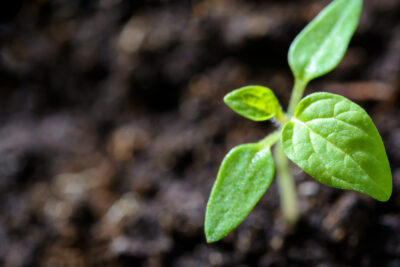
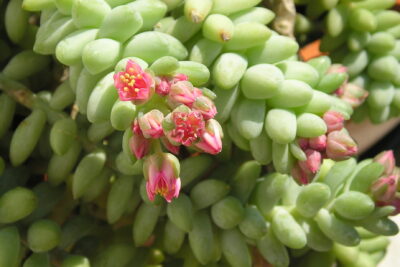



You Must Read